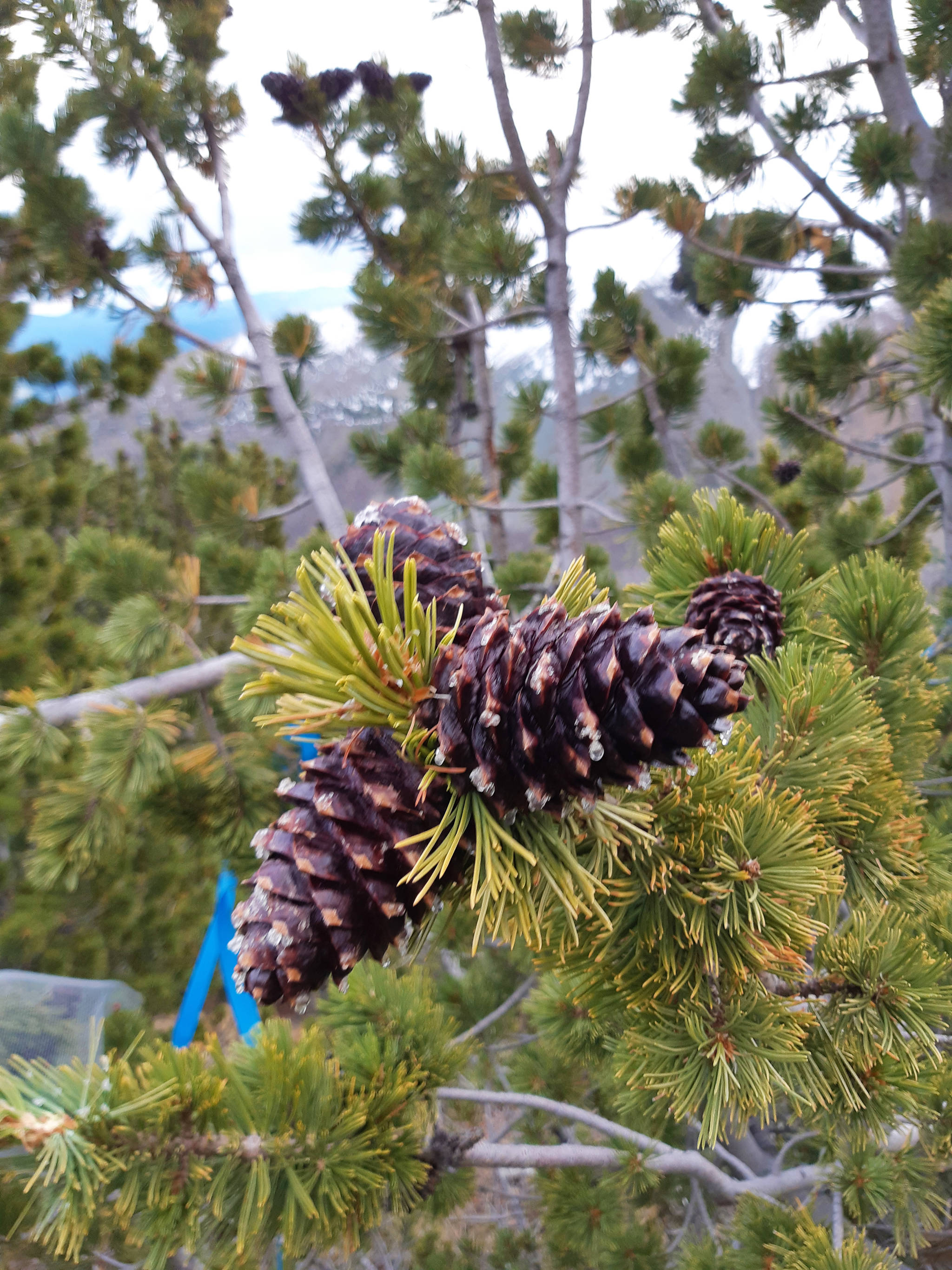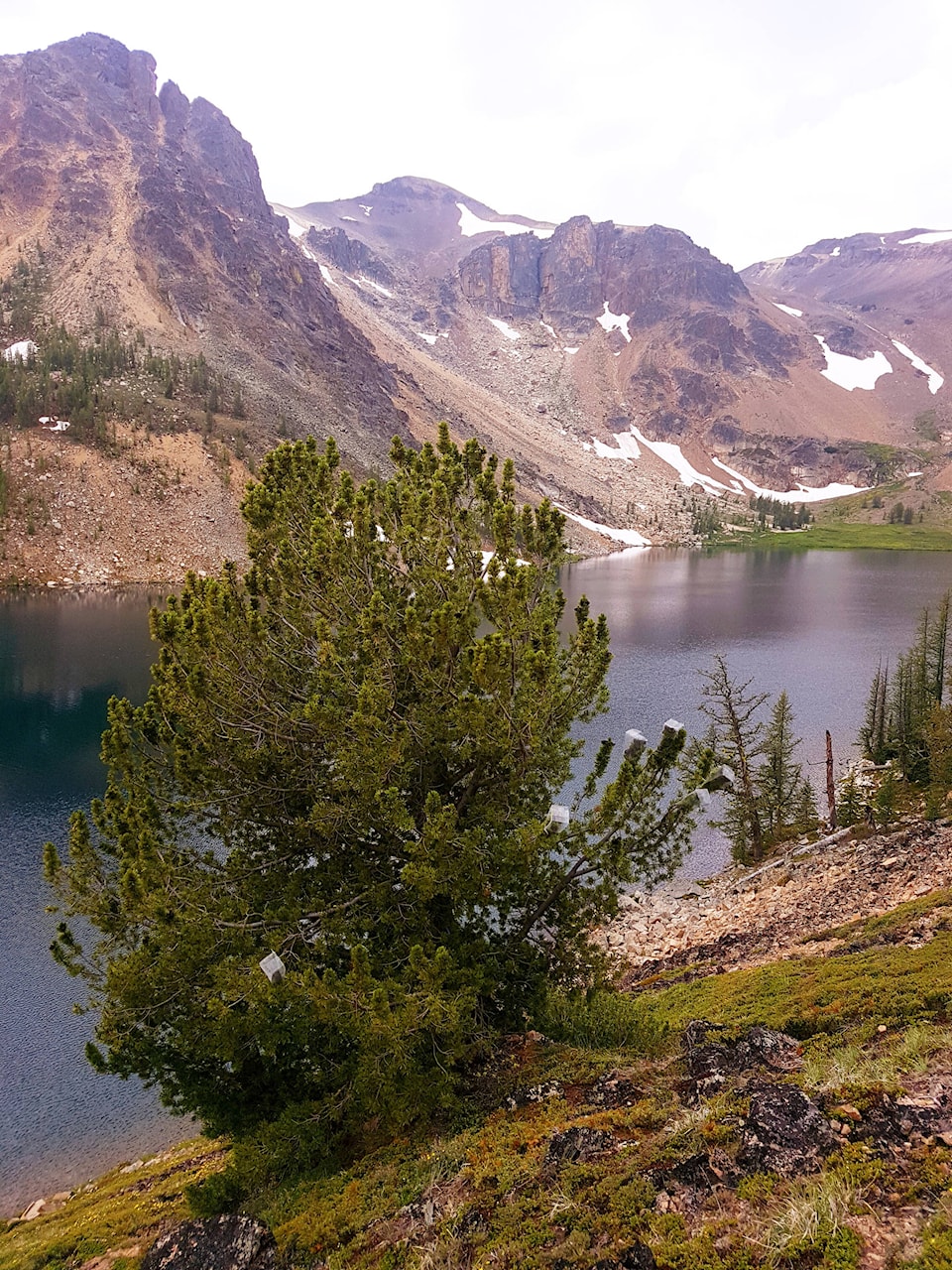For 15 years plant ecologist Randy Moody has been working on the promotion and conservation of the whitebark pine.
Every year Moody, and a small team across B.C., gather a crop of whitebark pinecone seeds for recovery and conservation efforts.
Moody says that this year’s crop was the largest he has seen in his career.
“We’ve been collecting for about 15 years and this year was by far the biggest ever,” said Moody, who adds that the team collected over 1 million seeds.
This bodes well for tree conservation efforts, allowing the Whitebark Pine Ecosystem Foundation of Canada to not only gather data on the tree species but also continue conservation through planting more of the endangered species’ seeds.
The whitebark pine faces several challenges, including the mountain pine beetle, forest fires, climate change, and the biggest culprit; pine blister rust.
Since the trees only grow in high alpine forests, says Moody, they have no where to go.
“When the temperature changes at the top of the mountain there is no where for the tree to migrate further,” Moody said. “This will likely cause them to shift north.”
Conservation is important because the trees are a large food source for many species of wildlife, and sick forests can affect the entire ecosystem.
“It’s a very charismatic tree, only found on mountain tops and in truly great landscapes,” said Moody. “It’s a large source of food for both the Grizzly Bear and the Clark’s Nutcracker (bird).”
He adds that most whitebark pine have grown because of the Clark’s nutcracker. The birds hide the seeds to eat at a later date and sometimes they forget about those seeds, effectively planting more trees.
“It is also a great source of calories for Grizzlies before hibernation,” Moody said. “This year we saw a group of cubs high up in a tree eating seeds straight out of the tree.”
Squirrels, black bears and other birds also like to feed on the seeds.
The process for recovery involves going into very sick forests and picking out the very healthy trees, Moody says.
“Those [healthy] trees have to have something genetically special about them in order to be unaffected by blister rust,” he explained. “We grow seedlings from those trees, and we also test them to see if they can handle the rust.”
This year the WPEFC saw some success with conservation. They found two healthy trees on Mt. Baker and two trees from a lake near the U.S. border, all of which had some level of resistance.
There are also another 30 to 35 trees in and around Kimberley that are yet to be tested.
“The hope is that you can restore populations,” said Moody. “The rust very slowly kills the trees, limb by limb, so it gives us time to plant more trees by the time those die. The problem is, it takes about 40 years for the trees to be mature enough to produce pinecones and seeds.”
The process for gathering seeds isn’t an easy feat either. The team goes into the forest in June, by helicopter or by foot, and climbs the trees. They place small wire/mesh cages, called cone cages, on each pinecone to protect them from being harvested by wildlife. Then, in September, the team comes back to collect the cones and harvest the seeds.
You won’t find whitebark pine in town, or even in the Kimberley Nature Park, but Moody says if you’re up in the Alpine or even at the top of the Easter chair at Kimberley Alpine Resort, you might be lucky enough to spot one of these elusive trees.
For more information or to get involved with conservation, visit www.whiteparkpine.ca. The Whitebark Pine Ecosystem Foundation of Canada recognizes the support of the Fish and Wildlife Compensation Program and Columbia Basin Trust.
corey.bullock@kimberleybulletin.com
Like us on Facebook and follow us on Twitter

